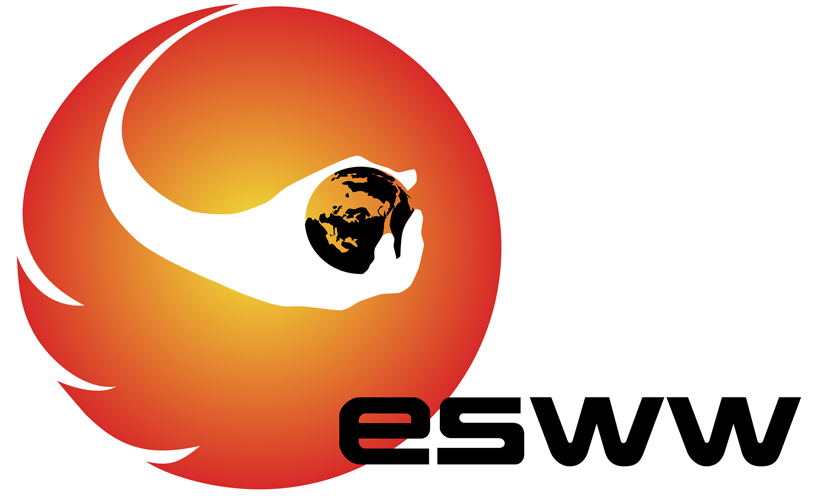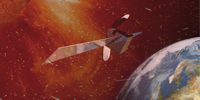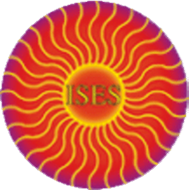
15-19 November, 2010 - Brugge, Belgium
Tutorial: Space Weather
Space Weather, it seems trivial: the science behind it and its applications. But it isn't. Space Weather is a complex phonomenon involving many areas. Even if you are into the subject, you can come to new insights of the basics.
The tutorial will be given on the first day of the meeting. This will be geared towards students, young scientists/engineers and people new to the field, but all are welcome to attend.
Program
| 10:00-10:05 | Welcome | ||
| 10:05-11:00 | The driving force behind Space Weather | Dr. Manuela Temmer | |
| Outline The Sun is an active star and its most violent activity phenomena are known to be flares and coronal mass ejections (CMEs). How important it is to understand these phenomena, especially CMEs and their interaction with the ambient solar wind, comes from the fact that they may cause severe geomagnetic storms when their embedded magnetic fields and the shocks ahead compress and reconnect with the Earth's magnetic field. Not only CMEs but also high speed solar wind streams emanating from the Sun's coronal holes and corotating interacting regions may cause recurrent geomagnetic storms. The effects of this solar activity are manifold and include delightful northern lights, increased radiation for manned space missions and aircraft passengers, failures in spacecraft navigation/communication systems as well as blackouts of power plants on the ground. These changing conditions in the near-Earth space environment are known as our 'space weather'. To understand the "big picture" of solar-terrestrial relation complementary multi-wavelength observations of eruptive events are needed. New scientific missions dedicated to observe the Sun over a wide wavelength range help us to improve the knowledge of our space environment with the goal to forecast our space weather. 1. Space weather related phenomena (CMEs, flares, high speed solar wind streams), 2. Multiwavelength data Ð combining observational facts, 3. Propagation of CMEs in interplanetary space. | |||
| 11:00-11:15 | Coffee | ||
| 11:15-12:15 | Space Weather effects on spacecraft and aircraft | Dr. Keith Ryden | |
| Outline Space weather is not, on average, getting any worse, but our vulnerability to it is increasing as technology becomes ever more advanced. For example, at the start of the space era electronic systems were based on discrete transistors of relatively large scale, but the progression to today's sub-90 nanometer feature-size chips has brought with it a progressive increase in susceptibility to upset and damage. Even aircraft avionics now suffer problems at high altitude and latitude. Satellites are also exposed to other significant hazards such as electrostatic discharge which has, over the years, proved difficult to suppress. Each of these practical engineering effects are linked to distinct solar features and events. Engineers have the task of understanding these vulnerabilities and finding solutions, while at the same time balancing the costs of protection against the benefits. While the ideal solution is simply to design-out any vulnerability, this cannot always be achieved, in which case risk estimation and potentially space weather services (forecasts and warnings) become more important. Of increasing interest today, given our growing reliance on satellites for critical services (e.g. navigation), is the question of what scale of space weather storm engineers should design for, bearing in mind that much larger storms have occurred in the past than those observed in the space era to date. Also what effect would such a storm have on the aviation industry given the large number of people who are in the skies at any one time? | |||
| 12:15-12:30 | Conclusions | ||
| 12:30-13:30 | Sandwich Lunch | Vives-room | |
| 12:45-13:15 | Planeterrella | Bach-room - you can enjoy the show with a sandwich | |
About ...
Manuela Temmer currently works at the Space Research Institute of the Austrian Academy of Sciences in Graz. Her PhD thesis covered the topic of solar activity phenomena over the solar cycle. As post-Doc she spent two years at the University of Zagreb working together with Bojan Vrsnak on the relation between CMEs and flares. She was awarded with two research fellowships from the Austrian Academy of Sciences and the Austrian Science Fund enabling her to work independently. She has worked as PI and Co-I on a range of projects, among others she is involved in the EU project Solar Terrestrial Investigations and Archives (SOTERIA) which is dedicated to Space Weather.
Keith Ryden graduated from the University of Bath, UK, in 1986 with a First Class Honours degree in Electrical and Electronic Engineering. He then joined the Royal Aerospace Establishment, Farnborough (now QinetiQ), and was one of the initiators of the UK/US research satellite project, STRV1a/b. In the role of spacecraft design manager, he saw STRV1a/b through to a successful launch and the start of operations in 1994 while also completing an MSc in Satellite Engineering from the University of Surrey. He went on to undertake research and provide operational advice to MoD and NATO on the Skynet / NATO series of satellites, and in particular he led investigations into a number of operational anomalies. He has since developed new space weather tools for ESA and is currently working on evaluating the radiation hazards faced in future missions to Jupiter. He is the lead investigator for the Merlin radiation monitor deployed in medium Earth orbit on the Galileo test satellite and for a similar unit planned for the NASA SET-1 mission. Currently he is the leader of the Radiation Environment and Effects team at QinetiQ and a QinetiQ Fellow.
The Planeterrella demo will be given at 12:45 in the Bach-room. You have the chance to grab a sandwich and watch the show. After the show, you can of course continue eating.
Practical
Monday Nov 15, 2010: 10:00 - 12:30, Ambassador room.
Following the tutorial, the participants are offered a free sandwich lunch.
Registration is FREE but necessary. Participation to the ESWW7 is NOT necessary.







